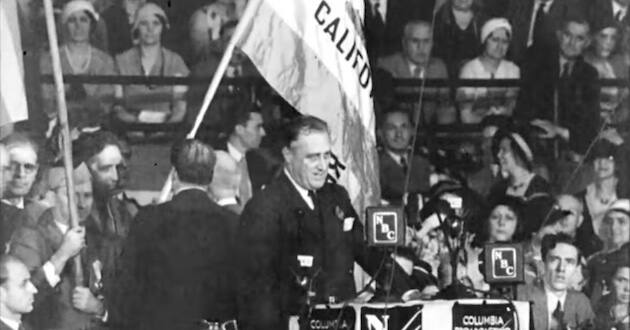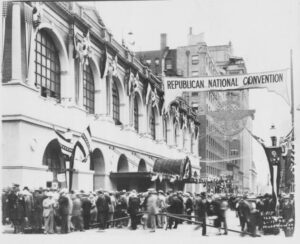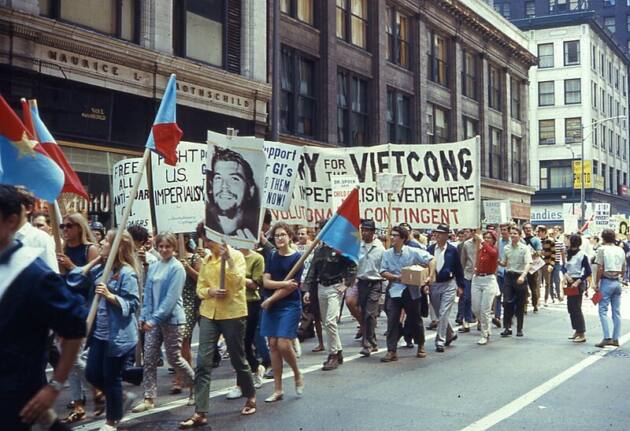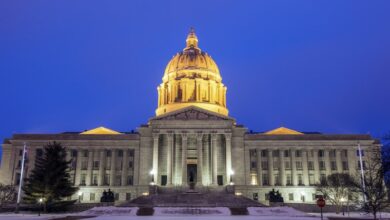Democrat conventions have a history of drama and local connections

The Democrat Party has a history of power struggles, raucous attendees, and drama at its presidential conventions. This year provides its own unique set of circumstances.

Let’s look at a few of the more memorable meetings and their interesting, if not confusing, rules.
On July 4, 1900, the Democrat National Convention took place in Kansas City, where William Jennings Bryant received his nomination. The Republicans held their National Conventions in Kansas City in 1928 and 1976.
Rules may be thrown out this year
Now that the sitting president will not be the candidate, it is a good time to look at the rules of Democrat conventions, and in particular, the history of Chicago Democrat conventions. Examining the rules and their implications provides us with valuable understanding of the selection process and voting patterns of delegates.

“About 15% of the delegates to the Democrat National Convention will be superdelegates, likely sitting senators, congresspeople, perhaps governors, and/or retired officeholders who can change their vote according to their own choices or party choices. Democratic pledged delegates must support a specific presidential candidate or express an uncommitted position according to the delegate selection rules, which state, “Delegates elected to the national convention pledged to a presidential candidate shall in all good conscience reflect the sentiments of those who elected them.1” Because they are on the same ticket, Democrats are using that loophole to shift votes from Biden to Harris.
Pledged District Delegates are elected primarily based on congressional districts, but sometimes state legislative districts. Pledged at large, delegates are distributed and elected on a statewide basis. Pledged add-on delegates are usually party leaders, and state officials, determined by the total of district and at large delegates multiplied by 15%. Superdelegates are usually party leaders who are unpledged.
There are no ‘winner take all’ rules if the candidate receives at least 15% of the vote, either by district or statewide. Despite their election as pledged delegates, delegates are not legally bound to support any candidate.
The rules vary a little bit from convention to convention, but in general they do not change much. However, these rules explain how a candidate can go into the Democrat National Convention with most of the pledged delegates but have the Convention settle on another individual with no pledged delegates, as the delegates are not legally bound to the votes of the caucus or primary.
Kansas City connection to convention rules
The old rules pledged delegates to the candidate through several delegate votes, binding them to their respective candidates through a specific number of votes, until one candidate received a majority of the delegate votes. Such was the case in 1932, when Senator James A. Reed, a Democrat from Missouri, ran for president. Reed and Pendergast took the train to the Chicago Convention, and James Reed received all 36 votes from Missouri delegates on the first ballot, but twelve shifted their votes to Roosevelt before the tally was announced. Reed picked up eleven votes from Oklahoma, leaving him with 33 votes on the third ballot.
The Democrat Convention in 1932 went through four ballots before California delegates were released for Roosevelt. The entire Missouri delegation went for Roosevelt on the fourth ballot.
In the convention of 1944, Roosevelt lacked the delegates needed for a fourth term, as several state delegations had revolted, thinking that three terms should be the limit. Pendergast was rumored to have swung the Missouri delegation to Roosevelt in exchange of elevating Missouri Senator Truman to the second place on the ticket. 2
Under the old rules, with multiple ballots, a sole candidate with almost a unanimity of pledged delegates should win on the first ballot, a popular choice of state primaries and caucuses. Perhaps the rules were changed to eliminate the control of political bosses in determining political candidates, something the Truman ascendancy seemed to prove, but the change may mean that the candidate winning almost all of the primaries and caucuses, is not the candidate promoted to the general election. Was Missouri responsible for the change? The coming election will definitely be historic.

In Democrat politics, the last time a Democrat restricted himself to one term was in 1968, also in Chicago. Unpopular over the Vietnam War, Lyndon Johnson knew he could not win re-election. His one sentence utterance that “he would not seek nor accept the nomination of his party’s president” followed a long list of accomplishments and concerns. Even his wife had been kept in the dark.
Riots, independent runs, controversey
What followed was a convention marred by unrest and riots, leading to the nomination of then Vice President Hubert Humphrey from Minnesota. George Wallace ran as an independent, receiving almost 10 million votes, which if added to Humphrey’s 30 million, could have surpassed Nixon’s almost 32 million. That is how close the election was.
George Wallace was the last independent candidate to win electoral votes, and his campaign marked the end of the Democrat voting block in the South. This year, we have Robert Kennedy Jr. on the ballot, and although at this point, he doesn’t have enough states to win the 270 electoral votes needed to succeed, he is on the ballot in six of the swing states: Michigan, Pennsylvania, Nevada, Arizona, Georgia, and Wisconsin. He may not win the any of those states, but he could swing the results in either direction.
We are in for a hard-fought election, complete with too many ads, slogans, and rdebaets over rally size. Will history repeat itself? Only time will tell.
–By Rober White | Contributing editor and resident historian for Metro Voice.
Read more of his work in our History and Archaeology section HERE.
1 Rule 13J of the 2024 Democrat Convention
2 Tom’s Town by Willian J Reddig







